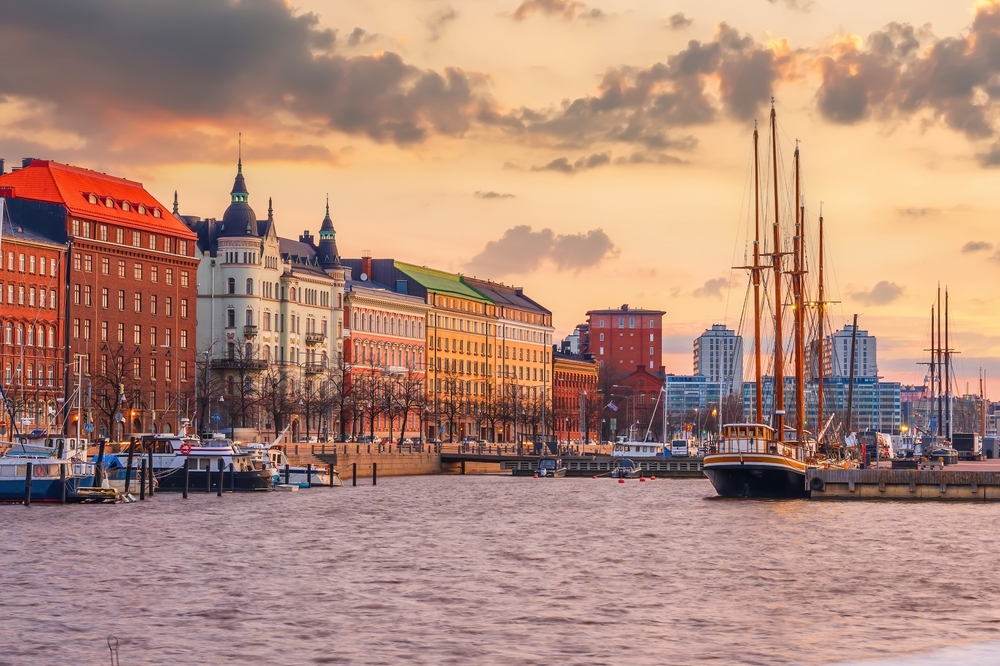Navigating the labyrinth of prices in the United States can feel like a scavenger hunt for your wallet. While you may be used to thrift in one place, the price tags attached to life’s little necessities can vary wildly as you hop across borders. This isn’t just about the cost of living; it’s about recognizing the nuances of what different cultures deem as essential or luxurious. You might find yourself paying a premium for things that are practically giveaways elsewhere. So, let’s dive into the curious world of what takes a bigger bite out of your budget stateside.
1. Fresh Produce

Buying fresh fruits and vegetables in the U.S. can sometimes feel like a splurge. While you can find affordable options, quality often varies, and organic produce carries a premium price tag. Countries like Italy or Thailand offer fresh produce at much lower costs, often sourced locally. These places have markets brimming with affordable, farm-fresh options that don’t empty your wallet. It’s a stark contrast to the U.S., where convenience often trumps affordability and freshness.
The cost of fresh produce can dictate dietary habits. When fruits and veggies are expensive, people may opt for cheaper, less nutritious options. This is particularly concerning in underserved communities where access to affordable, healthy food is already limited. In other countries, affordable produce is a staple, not a luxury. It’s one more way that geography influences your daily diet.
2. College Education

In the United States, the pursuit of higher education often comes with a mountain of student debt. You’ve probably heard tales of people paying off their loans well into their thirties and forties. This is a stark difference from countries like Germany or Norway, where university education is either free or significantly subsidized. The high tuition fees in the U.S. are often rationalized by the promise of a better job and salary prospects. Yet, the financial burden remains a significant concern for students and their families.
The ripple effects of expensive education go beyond just loan repayments. It can influence when you buy a house, start a family, or even retire. In many other countries, graduates enter the workforce without the heavy yoke of debt. This allows them to invest in other areas of their lives sooner. It’s not just about the money; it’s about the freedom to make life choices without a financial cloud hanging overhead.
3. Internet Access

The U.S. is notorious for its expensive internet services, both at home and on the go. In countries like South Korea and Japan, lightning-fast broadband is not just affordable but also widely accessible. According to a report from the Organization for Economic Co-operation and Development (OECD), the U.S. ranks lower than many other countries in terms of both speed and pricing for internet services. It’s a bit of a paradox given Silicon Valley’s dominance in the tech world. You’d think that the birthplace of the internet boom would offer more competitive pricing.
Part of the issue boils down to limited competition among service providers. In many U.S. areas, you’ll find only one or two companies offering broadband, curbing your ability to shop around. Compare that to areas in Europe where multiple providers vie for your business, driving costs down. The lack of competitors means you’re often stuck paying more for less. It’s a frustrating reality in a world that’s ever more reliant on being connected.
4. Childcare

Childcare in the U.S. can feel more like a mortgage payment than a monthly expense. Many parents find themselves shelling out thousands of dollars annually, an amount that rivals college tuition in some states. Compare this with countries like Denmark and France, where childcare is heavily subsidized. These nations view childcare as a societal necessity, not a luxury, and they’ve structured their economies to reflect that. The result is a system where parents can pursue their careers without the financial strain of childcare costs.
High childcare expenses have a cascading effect on household budgets. It can influence career choices, limit savings, and even deter people from expanding their families. The U.S. system often forces one parent, usually the mother, to reconsider working at all. This stands in contrast to more supportive systems abroad, where affordable childcare encourages dual-income households. It’s a classic case of where you live shaping how you live.
5. Prescription Medication

Prescription drugs in the U.S. are often eye-wateringly expensive. This isn’t just a matter of brand versus generic; even the latter can hurt your wallet. According to The New York Times, drug prices in the U.S. can be up to four times higher than those in other high-income countries. The reasons are complex, involving everything from patent laws to healthcare system inefficiencies. But the bottom line is that getting your meds can feel like negotiating a ransom.
Elsewhere, governments play a more active role in regulating drug prices. Many countries negotiate directly with pharmaceutical companies to keep costs down. This ensures that life-saving medications are accessible to everyone, not just those who can afford them. The U.S., however, often leaves these negotiations to the private sector, leading to higher prices. It’s a stark contrast that leaves many American consumers feeling the pinch.
6. Public Transportation

Public transport in the U.S. is often criticized for being both inefficient and costly. While major cities like New York and San Francisco have somewhat reliable systems, they’re often plagued by delays and high fares. In cities like Tokyo or Berlin, public transport is not only more affordable but also more reliable. The focus on public infrastructure in these places provides a level of convenience and accessibility that many U.S. cities lack. It’s a shortcoming that often makes driving a more attractive option despite its higher environmental impact.
The cost of a monthly transit pass in many U.S. cities can be prohibitive. This is especially true for low-income workers who rely on public transport to get to jobs far from home. In contrast, European cities often offer discounted or even free passes for students, seniors, and low-wage earners. This makes commuting less of a financial strain and more of a public service. It’s a reminder that getting from point A to point B shouldn’t break the bank.
7. Mobile Data

Mobile data plans in the U.S. are notoriously expensive. If you’ve ever glanced at your bill and wondered why it’s so high, you’re not alone. According to a report by Rewheel, U.S. consumers pay more for mobile data than people in most other developed countries. This is partly due to a lack of competition among providers, which drives prices up. Even with family plans and bundled services, your monthly payment can still feel excessive.
In contrast, many countries offer more competitive pricing for mobile data. European and Asian markets, in particular, have multiple carriers that keep costs in check. This means consumers can often find better deals and more flexible plans. The U.S. market, however, is dominated by a few key players who have little incentive to lower prices. It’s a frustrating reality for anyone trying to stay connected without breaking the bank.
8. Gym Memberships

In the U.S., keeping fit can be a costly endeavor. Gym memberships often come with high monthly fees and hidden charges like signup fees and cancellation penalties. In countries like Sweden or Spain, fitness is more accessible and affordable with public facilities widely available. These nations prioritize public health by offering community gyms that don’t cost a fortune. It’s a model that encourages people to stay active without a financial burden.
The high cost of gym memberships in the U.S. can deter people from committing to regular exercise. This is counterproductive in a country that often struggles with obesity and related health issues. In contrast, affordable gyms abroad make it easier for people to embrace a fitness-oriented lifestyle. By lowering the financial barrier, these countries promote a healthier population. It’s yet another area where expense dictates lifestyle choices.
9. Healthcare

In the U.S., healthcare often feels like a luxury rather than a right. You’re not just paying for the doctor’s expertise but also for layers of bureaucracy, insurance, and administrative costs. In many countries, public healthcare systems absorb these expenses, making medical care accessible to all. According to a study by the Commonwealth Fund, the U.S. ranks last among high-income countries in terms of healthcare affordability and access. So while you might get top-notch service, you’ll likely pay a top-shelf price for it.
Meanwhile, nations like Switzerland and Singapore balance high-quality care with affordability. In these countries, the government plays a significant role in keeping healthcare costs in check. Taxes fund a large portion of the system, ensuring that everyone gets coverage without facing financial ruin. This model contrasts sharply with the U.S., where healthcare is a sprawling industry dominated by private companies. Here, the cost of a simple doctor’s visit can be a budgetary shock, unlike in places where it’s as run-of-the-mill as buying groceries.
10. Housing

In the U.S., housing prices can be shockingly high, even in less densely populated areas. The dream of home ownership feels increasingly out of reach for many, especially in urban centers. Compare this to countries like Finland or Austria, where housing is more affordable and often subsidized. These nations employ policies that stabilize the housing market, making it accessible to a broader spectrum of people. The high cost of living in America often forces people to make significant compromises, from smaller spaces to longer commutes.
The ripple effect of expensive housing stretches beyond just your monthly rental or mortgage payment. It impacts your ability to save, spend, and invest in other areas of life. In countries with more affordable housing, people can allocate their resources more freely. This fosters a higher quality of life and greater financial security. In the U.S., however, high housing costs can feel like a financial straitjacket.
11. Education Materials

Educational materials in the U.S. are often surprisingly pricey. From textbooks to lab fees, the costs can add up quickly and catch students off guard. In countries like Finland or South Korea, educational resources are often provided at little to no cost. These nations recognize the value of investing in education and ease the financial burden on students and their families. The high cost of educational materials in the U.S. can contribute to the overall financial strain of getting an education.
The cost of textbooks alone can be astronomical. Many students resort to buying used books or renting them to save money. In contrast, other countries often provide these resources through schools, reducing the financial stress on students. This can make a significant difference in accessibility and educational outcomes. In the U.S., however, the cost of educational materials often adds to the already substantial financial burden of pursuing an education.
12. Personal Care Products

Personal care products in the U.S. can come with steep price tags. From skincare to dental hygiene, the costs can quickly add up, especially for those who prioritize quality. In countries like South Korea or Japan, personal care products are often more affordable and of high quality. These nations have competitive markets that drive down prices while maintaining high standards. The high cost of personal care in the U.S. often makes it a luxury rather than a routine expense.
The price of personal care products can influence people’s daily habits. When these items are expensive, people may opt for cheaper, less effective alternatives. In other countries where these products are more affordable, quality personal care is more accessible. This can lead to better overall health and well-being. In the U.S., however, the high cost of personal care products can make them feel like a splurge instead of a staple.
13. Dining Out

Dining out in the U.S. can be an expensive affair. From tipping to taxes, the final bill often exceeds the menu price by a significant margin. In countries like Spain or Thailand, eating out is more affordable and often a daily ritual rather than a special occasion. These places offer delicious, diverse food options at prices that encourage rather than deter. The high cost of dining out in the U.S. can make it feel like a luxury rather than an everyday choice.
The culture of tipping in the U.S. contributes to the high cost of dining out. While tipping is intended to reward good service, it often adds a substantial percentage to your bill. In other countries, service charges are often included in the menu price, making dining out more straightforward and budget-friendly. This difference can influence how often people choose to eat out and experience local cuisine. In the U.S., the extra costs can make dining out feel more like a treat than a regular occurrence.
This article is for informational purposes only and should not be construed as financial advice. Consult a financial professional before making investment or other financial decisions. The author and publisher make no warranties of any kind.








